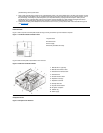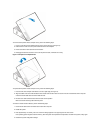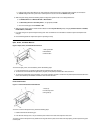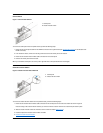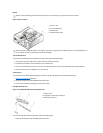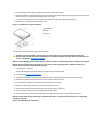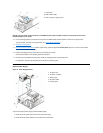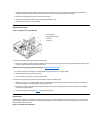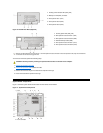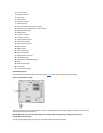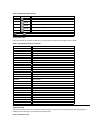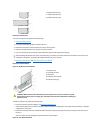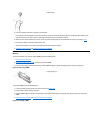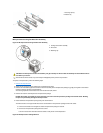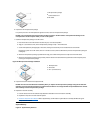
Note the routing of the DC power cables underneath the tabs in the chassis as you remove them from the system board and drives. It is
important to route these cables properly when you replace them to prevent them from being pinched or crimped.
3. Removethescrewbelowthefanguardonthebackofthechassis.
4. Slide the power supply toward the front of the computer approximately 1 inch.
5. Liftthepowersupplyupandoutofthechassis.
Expansion-Card Cage
Figure 14. Expansion-Card Cage Removal
To remove the expansion-card cage, perform the following steps:
1. Examine any cables connected to expansion cards through the back-panel openings and disconnect any cables that will not reach to where
the cage must be placed upon removal from the chassis.
2. Locatethesecuringlever(seeFigure14).Rotatetheleverupwarduntilitstopsinanuprightposition.
3. Slide the expansion-card cage out of the chassis.
4. Lift the expansion-card cage up and away from the chassis.
To replace the expansion-card cage into the low-profile chassis, perform the following steps:
1. With the securing lever in the upright position, align the expansion-card cage slots with the tabs in the chassis opening for the expansion-
card cage (see Figure 14). Slide the expansion-card cage into place.
2. Rotate the securing lever downward until it is flush with the top of the chassis. Make sure that the riser board is fully seated in the RISER
connector on the system board.
3. Reconnect any cables you removed in step 1 of the previous procedure.
Riser Boards
The low-profile chassis has a standard PCI riser board (see Figure 15) or an optional PCI/ISA riser board (see Figure 16). The PCI riser board
provides three PCI expansion-card slots. The PCI/ISA riser board provides one PCI expansion-card slot, one ISA expansion-card slot, and one
shared PCI/ISA expansion-card slot.
Figure 15. PCI Riser Board (Standard)
1
Securing lever
2
Expansion-card cage
3
Slots (2)
4
Tabs (2)
NOTICE: Use a wrist grounding strap as explained in "Precautionary Measures."




